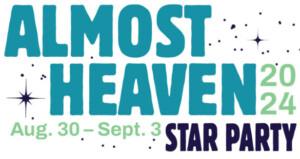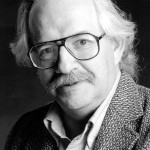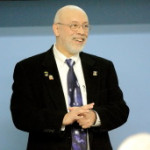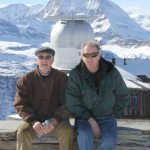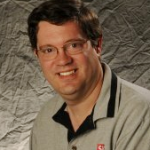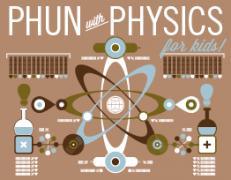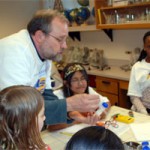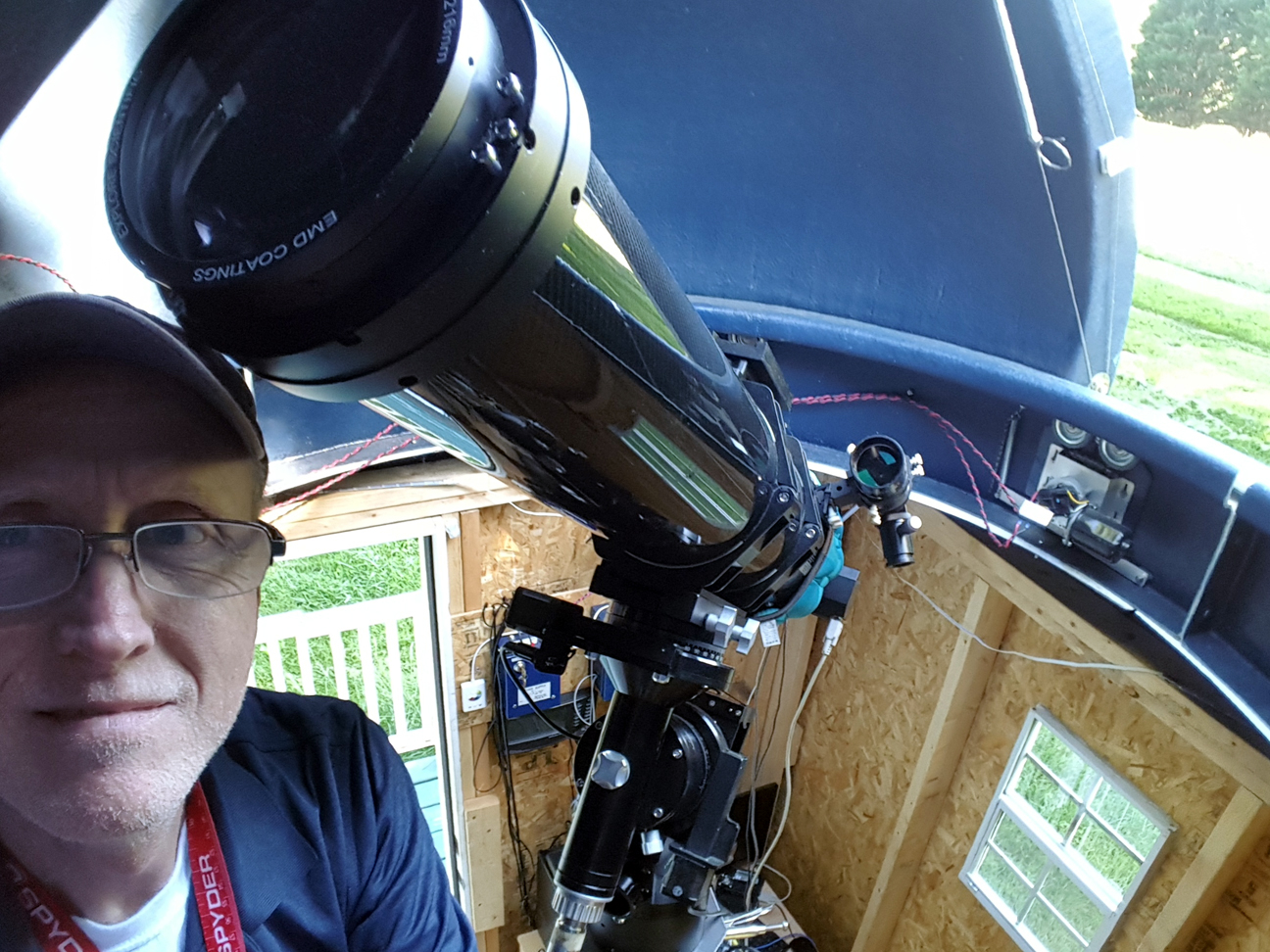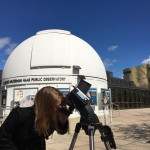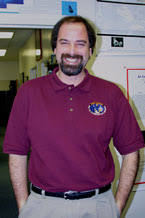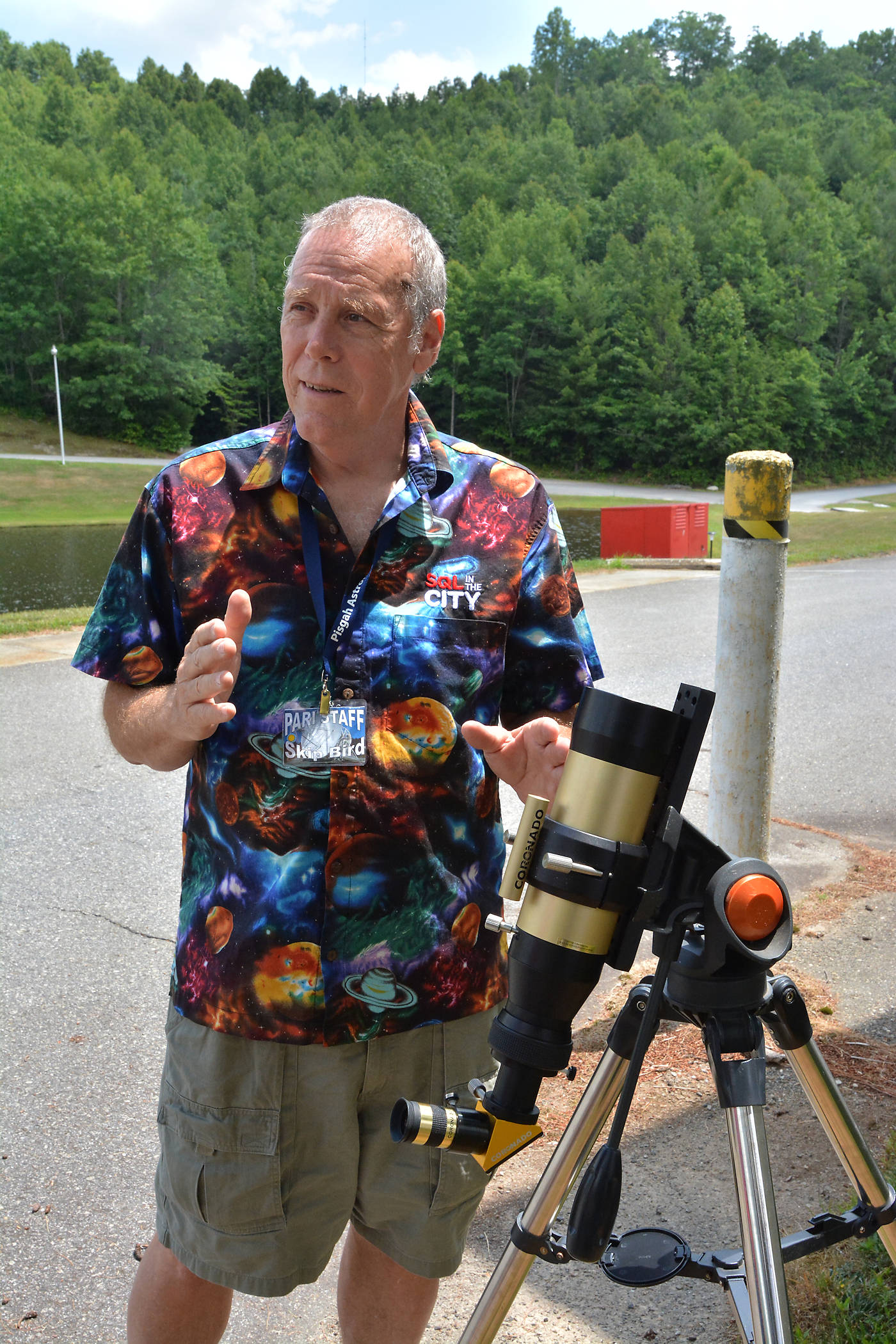Revised August 29 2018
Information on this page will be updated it is confirmed for AHSP 2018! Some content remains tentative.
2018 Daily and Full Schedule (pdf) and Electronic Calendar
Friday, September 7, 2018
Dr. David DeVorkin / Smithsonian
6:30 p.m. — The Many Worlds of Fred Whipple
Summary
David H. DeVorkin is senior curator of history of astronomy and the space sciences at the Smithsonian Institution. DeVorkin’s major research interests are in the origins and development of modern astrophysics during the 20th century and the origins and development of the space sciences from the V-2 rocket to the present. He is the author/editor/compiler of 16 books and more than 150 scholarly and popular articles. He has spoken many times at AHSP and at NOVAC.
Saturday, September 8, 2018
Cal Powell / NOVAC
9:30 a.m. — Confessions of a Meteorite Collector
Summary
Cal’s presentation will approach the topic of meteorites from a collector’s point of view. In addition to a brief overview of meteorite types accompanied by specimens from his collection, Cal will offer tips and suggestions to attendees who are considering either starting a collection or buying a meteorite as a gift.
Cal Powell has been a NOVAC member since moving to Virginia in 2010. A native New Yorker, Cal’s interest in astronomy began at the age of eight. Now retired from a career in IT, he is a past president and life member of the Westport (CT) Astronomical Society, a member of the Analemma Society and volunteer at the Roll-Top Observatory in Great Falls, and a lead volunteer in the Astronomy Education program at the National Air and Space Museum. Cal has been a featured speaker at several NOVAC meetings and has conducted the sky tour at NOVAC’s Astronomy Day and Star Gaze events.
John Sojka
11:00 a.m. — Smartphone astrophotography
Summary
This session will introduce you to the fascinating world of astrophotography using your SmartPhone. John will cover how to attach a Smartphone to a telescope using rubber bands to take images of the night sky. SmartPhone Apps are available that allow you to configure your SmartPhone like a DSLR camera. We’ll use this technique to image the Moon, planets, galaxies and nebulae. Participants will be able to implement the technique right away. We’ll provide suitable rubber bands.
This talk is for beginner to intermediate imagers. It will also touch on tools for post processing to produce a final image. Those with Android phones may wish to download and become familiar with Open Camera, Camera360, or Camera FV-5. iPhone users should become familiar with VSCO, Camera+2 or ProCamera. This session will be a primer for free post-processing software such Registax and Deep Sky Stacker. More advanced post-processing techniques will be covered in Kevin’s PixInsight talk Sunday at 9:30 am.
Biography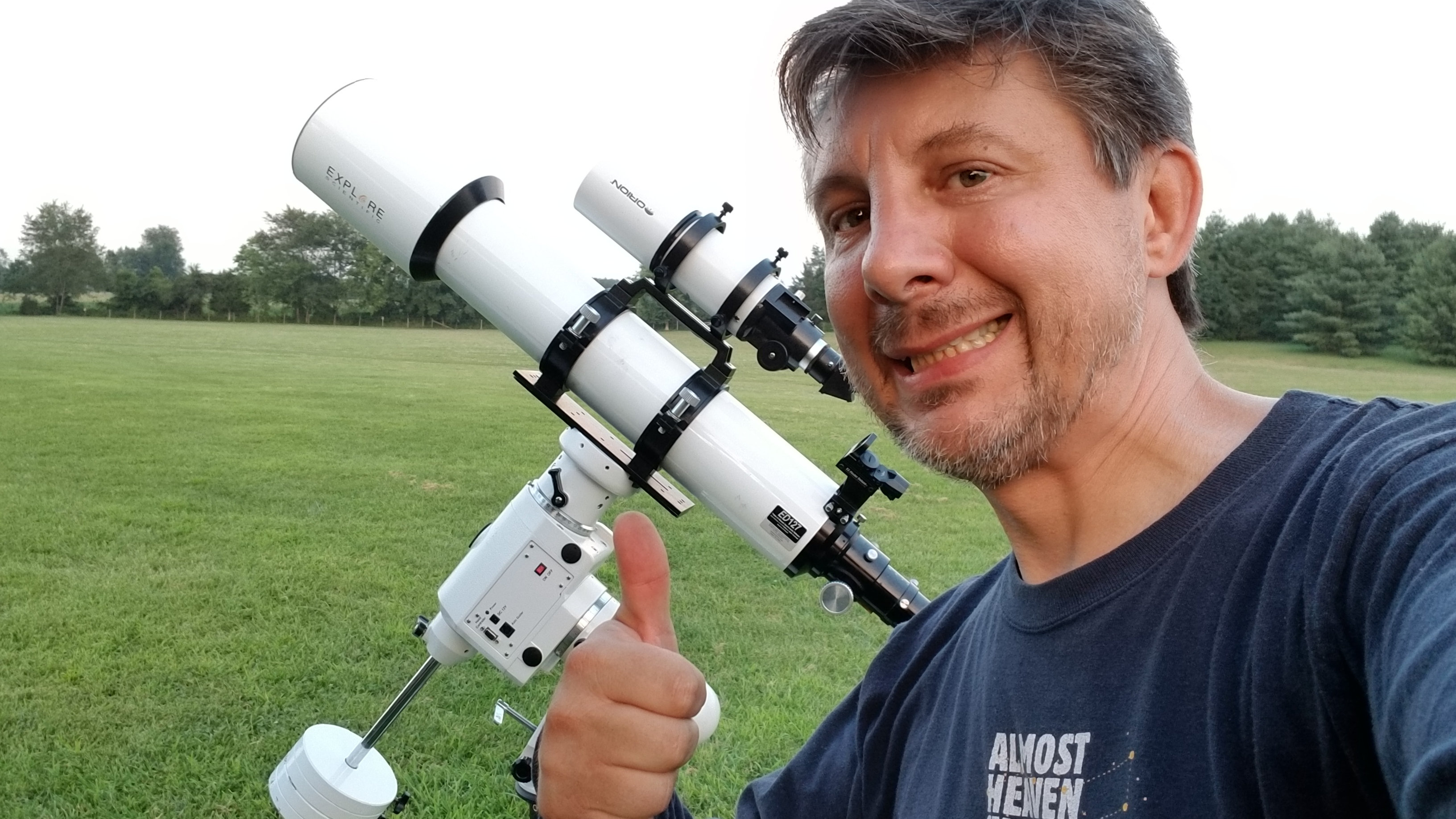
John Sojka is a Department of Defense professional working in topics related to space. John is an amateur astronomer who had the privilege of using his astrophotography skills at work. His astrophotography journey started in 2010 when he was asked to image the plume on the Moon generated by NASA’s LCROSS impactor. Subsequently, he assisted the Smithsonian National Air and Space Museum with a successful Deep Space Imaging program for the public. John’s passion for astronomy started when he was a boy. His father was instrumental in building several observatories and reflector telescopes. John uses his father’s home-made 10″ reflector telescope to this day.
[TBD] / NOVAC
1:30 p.m. — Observing skills 201 – workshop on finding visual objects
Summary
[Tentative description:] AHSP has organized a novel effort to help beginning observers better understand how to find specific objects in the sky with binoculars or small telescopes, and without “go to” aids. We’re calling this Observing 201, in the sense that it will include techniques for those who have at least begun to learn the sky. Observing 201 will have 2 parts. First will be a workshop on Saturday afternoon with several NOVAC observers reviewing the best techniques for finding several less-than-obvious objects. This will include considerations of your optics, the use of an atlas, and the use of finding chards. Second will be assisted viewing with your telescope on the field (location to be determined) helping you find these objects in the sky.Observing 201 is being coordinated with the AHSP Binocular Observing Challenge, new this year. We will use some of the same targets and finding charts. You should bring your binocs and atlas to the workshop. If you have a small telescope, you should know the field of view (on the sky) of a favorite low magnification eyepiece.
Biography
Several experienced observers will assist in this project
Tom Finkenbinder / NOVAC
3:00 p.m. — Skynet virtual observatory and multi-messenger astronomy
Summary
Tom will present an update on Skynet, a network of public access remote observatories, including growth of the program, and new modifications to the network to accommodate the field of Multi-Messenger Astronomy. Multi-Messenger Astronomy is the collective name for professional and amateurs to observe astrophysical phenomena as revealed by an increasing number of techniques. Finding electromagnetic counterparts for gravity-wave detections is an obvious, recent development.
Tom has been a NOVAC member since 2002. His academic and professional background in electrical engineering provided him with a strong foundation in communication systems related to the Internet. That work experience and a rekindled interest in astronomy from childhood created curiosity about automated observatories, whose use and availability grew around the world. Tom completed his Messier Certificate in 2007, mostly at Camp Highroad, Virginia, with a 5-inch APO and O’Meara’s well-known book, Deep Sky Companions: The Messier Objects. He has given talks on his interests before at AHSP. He also presents to K–12 and adult education groups, and by invitation at George Mason University.
Bob Naeye / journalist
6:30 p.m. — The Bizarre Cigar from Another Star
Summary
Planetary astronomers are a prophetic lot. Many of their greatest discoveries are ones that they predicted in advance. Decades ago, astronomers realized that the giant planets have ejected trillions upon trillions of smaller objects from our solar system. These asteroids and comets are now wandering the frigid depths of interstellar space, never to return to their birthplace. Surely, astronomers thought, this process must have occurred around many of our Milky Way’s 200 billion stars. If that’s the case, our galaxy must be filled with enormous numbers of interstellar asteroids and comets. And it’s inevitable that some of these objects will pass through our solar system. Sure enough, in October 2017 a University of Hawaii planetary astronomer captured one of these interstellar interlopers as it raced through the inner solar system at breakneck speed. This started a frantic global observing campaign to study this strange object, later named Oumuamua, before it vanished from sight. Join Robert as he tells the story of the first known interstellar object to pass through the solar system, a strange elongated object that is the bizarre cigar from another star.
Robert Naeye is a former Editor in Chief of Sky & Telescope. Robert earned a master’s degree in science journalism from Boston University in 1992, and later worked on the editorial staffs of Discover and Astronomy magazine. He served as Editor in Chief of Mercury magazine (published by the Astronomical Society of the Pacific) from 2000 to 2003. He worked as a Senior Editor at Sky & Telescope from 2003 to 2007, before moving to NASA’s Goddard Space Flight Center to work as a Senior Science Writer for the Astrophysics Science Division. He returned to Sky & Telescope in June 2008 to serve as Editor in Chief.
Robert is the author of two books: Through the Eyes of Hubble: The Birth, Life, and Violent Death of Stars (Kalmbach, 1997) and Signals from Space: The Chandra X-ray Observatory (Turnstone, 2000). He has contributed to two other books, and has won several awards for his writing and outreach activities. He has served as an astronomy lecturer on tours to Australia, Chile, China, Easter Island, France, Iceland, Indonesia, Iran, Libya, and the USA. He has spoken many times at AHSP.
Sunday, September 9, 2018
Kevin Quin / NOVAC
9:30 a.m. — Using PixInsight in photo processing
Summary
Pixinsight has a reputation for being complicated, but you don’t have to master hundreds of pages of technical mumbo jumbo to use it to process your first astrophoto. In this talk, Kevin will demonstrate everything you need to know to turn your raw images into a finished picture. First we’ll walk through each of the basic steps: calibration, stacking, and stretching. We’ll use the remaining time to discuss some more advanced techniques like noise reduction, sharpening and masks. This is intended to be a hands-on practical demonstration rather than a lecture. We’ll post the data Kevin will be working on in advance so you can download it. Bring your laptop and follow along as we process the image together. And if you have any data of your own that you want help processing, be sure to bring that as well.
Kevin got sucked into digital astrophotography when he held his 5-year old’s Barbie camera (0.02 megapixels!) up to his C8, and it’s been a long road from there. After hurricanes and chainsaws devoured all of his neighbor’s trees, he built an observatory in his back yard. He warns everyone that he doesn’t really know what he’s doing, yet he still gets some very pretty pictures. And what one fool can do, another can.
Kevin is also the organizer of NOVAC’s astrophoto processing SIG, which meets every few months at Fairfac County’s Providence Rec Center. Meetings are announced on the NOVAC web site.
Skip Bird / Westminister Astronimcal Society
11:00 a.m. — Phun with Physics TOO
Have you recovered from last years Phun? Has your Shrink Wrapped body finally returned to its original shape? Are people running away from you because you still have the wrapping of a mummy hanging off you? Want to try and reach the cars with your Rocket this year? Then join Skip Bird for round two, as we explore some of the more FUN ways to abuse the properties of Physics.
Biography
Bob Traube / NOVAC
11:00 a.m. — Chorale Night Concert (pictures & music)
This presentation may be made after an evening talk (~8:00 p.m.) if conditions do not permit early observing.
Last March, the Lake Ridge Chorale performed a concert with a “Night” theme. It involved projecting over 100 of Bob Traube’s astrophotos while the choir sang night-themed music. Several NOVAC members attended and it was a great success (and fun to do).
Bob will reprise that performance at AHSP. He audio-recorded the choir and will present the photo presentation while it plays. The music will run about 35 – 40 minutes. He will add a short intro about the choir and the event in the beginning and a summary and Q&A afterward. Donations to support the community outreach efforts of the non-profit community choir will be accepted. (Lakeridgechorale.org)
Those of you wishing to see Bob in his tux will be disappointed.
The presentation will be made at about 8:00 on an evening when participants are not hurrying out to observe, or Sunday 11:00 a.m. at the latest.
Biography
Bob Traube has been an amateur astronomer and NOVAC member for about 20 years. During much of that time he has explored the complexities of astro-photography beginning with hand guiding film images, moving on to digital imaging, and now probing the deep mysteries of Pixinsight image processing. Bob is our site coordinator for the monthly observing sessions at Spruce Knob Mountain Center. Contact him at SKMC@NOVAC.COM to reserve your space from April through October.
When not capturing or processing images, Bob can usually be found rehearsing and performing music with the Lake Ridge Chorale. They are a non-profit, 501(c)(3) organization that performs free concerts with all donations going to selected, worthy, local charities. This confluence of hobbies has been great fun.
Guy Brandenburg / NOVAC
1:30 p.m. — ATM photo tour of AHSP
Summary
Guy is sponsoring a time for those who have made their own equipment or part of it to demonstrate what they have made, either in person, or via photos.
Guy is a retired mathematics teacher with over 30 years of classroom experience in DC Public Schools. For many years he has been the lead instructor at twice-weekly amateur telescope making workshop at the Chevy Chase Community Center (DC) under the auspices of the National Capital Astronomers. He continues his volunteer interest in STEM education as a member of the District of Columbia Math for America (MfA-DC) advisory board, and as an instructor for the Carnegie First Light Saturday science academy for middle-school students, using a hands-on approach to the sciences. He is the current president of the Hopewell Astronomical Society and Observatory, located near Haymarket, VA
Jerry Hubbell / Rappahannock Astronomy Club & Dir. of Electrical Engineering, Explore Scientific
3:00 p.m. — PMC-Eight Technology: Sharing the Vision
Summary
The Explore Scientific PMC-Eight System brings a new level of sophistication and precision to the astronomical telescope mount marketplace. Jerry will discuss the details of the technology involved with this new mount system and how it improves on the standard mount controllers that have been available since the late 1990’s. He will further talk about the growing OpenGOTO Community that Explore Scientific has created to share the technology with the wider amateur and professional astronomical community to enable the creation of custom control system applications that will enable anyone to explore the universe on their terms and according to their needs and aspirations.
Jerry Hubbell has spent the last 4 1/2 years as the Director of Electrical Engineering for Explore Scientific, LLC, and he is the principle design engineer for the PMC-Eight System. He is an active astronomer and is the Assistant Observatory Director for the Mark Slade Remote Observatory (MSRO) located in Wilderness, Virginia. His observing interests include Minor Planet astrometry and light-curve photometry, exoplanet observing, and high-resolution lunar imaging. Jerry is the author of two books published by Springer Books; Scientific Astrophotography, and Remote Observatories for Amateur Astronomers. Jerry is a retired Nuclear Instrumentation and Controls Engineer and Process Computer Systems expert with experience in analog and digital instrumentation design and maintenance, nuclear cyber security, and nuclear protection and control system scaling, setpoint, and error calculations.
Becca Ljungren / Smithonian
6:30 p.m. — Observatories of Chile
Summary
By 2020, 70% of the world’s ground-based astronomy infrastructure will be in Chile. Learn about the significant scientific contributions made by Chilean observatories, and why Chile is an important place for international astronomy collaboration. Find out how you can get involved with Chilean astronomy initiatives through programs like the Astronomy in Chile Educator Ambassadors Program, traveling to see the next solar eclipse, and more!
Rebecca Ljungren is a professional Astronomy Educator at the Smithsonian’s National Air and Space Museum and the Phoebe Waterman Haas Public Observatory. She has a master’s degree in Museum Education from The George Washington University, and her broader academic interests include the intersections between science, gender, art, and society. In January 2018, Rebecca traveled to Chile as part of the Astronomy in Chile Educator Ambassadors Program.
Monday, September 10, 2018
Chad Merrill / Earth Networks
9:30 a.m. — Interpreting Forecast and Model Data For Astronomer Enthusiasts
Summary
Chad Merrill will talk about how to interpret local forecasts as it relates to your specific area for astronomical viewing. He will also talk about how to take the forecast model data and cater it to your specific viewing location. The talk will include some of the biases in forecast model data that can misinterpreted by the end user.
Chad Merrill is a meteorologist who has been working for 10 years with Earth Networks in Germantown, Md., a company that provides customized forecast products for specialized applications. Prior to working in the Meteorological Operations Department at Earth Networks, Chad was a television meteorologist for WHAG-TV in Hagerstown, Md. He graduated with a meteorology degree from California University of Pennsylvania in 2002.
Dr. Carey Lisse / JHU-APL
1:30 p.m. — Observing 1I/Oumuamua from APO & Spitzer and the Upcoming Flyby of Ultima Thule (MU69) by New Horizons
Summary
[Tentative: Carey will speak about very recent results from Apache Peak Observatory and Spitzer Telescope observations of 1I/Oumumua, plans for upcoming New Horizons flyby of MU69/Ultima Thule on 01 Jan 2019, and the overall scientific advances coming from this work.]Carey is a senior research scientist at JHU/APL studying the formation and evolution of solar systems, including our own, from their beginning through the formation of present day life. With backgrounds in chemistry, physics, and biology, he does this mainly through studying the clues left behind during their growth – the comets, asteroids, KBOs, gas, and dust left orbiting around stars as they age. An everyday example of this kind archeo-astronomy work is our Moon, which is a relic of a giant impact on the growing Earth, and its massively cratered surface, evidence for the Late Heavy Bombardment, and may have brought the oceans and life forming organics to the Earth. He is best known for his graduate work on the Nobel Prize winning Cosmic Backgound Explorer Mission, his discovery of x-ray emission from Comet Hyakutake, his work as a Deep Impact mission and Comet ISON Observing Campaign scientist, detecting evidence for a giant planetary impact in the HD 172555 system and a Late Heavy Bombardment in the Eta Corvi system, and as a member of the New Horizons Pluto flyby science team.
Carey received a PhD in Physics from UMD College Park, after earlier study at UC/Berkeley and Princeton. He has given multiple talks at the Cherry Hill Star Parties in upstate Pennsylvania. You can find his appearances as a science communicator on IMDb!
Skip Bird / Westminster Astronomical Society
3:00 p.m. — Outreach for Everyone with the Night Sky Network (How to Feed, Weed and Grow your Astronomy Club)
Summary
Ever wonder what to do when your star gazing event was clouded out or it wasn’t dark enough to see anything? Tired of the hassles of cancelling a program? Then join Skip Bird and the Night Sky Network and find out how you never have to cancel a star gazing program again (unless they forgot to plow the 16″ snowfall from the parking lot from the day before). Come for a program full of Fun Astronomy adventures. We will explore the Universe by using the most powerful words known to mankind — the “Night Sky Network” . OK, you’re right, they are the second most powerful words after the “I” word. Explore expert tips and activities collected from the wisdom of hundreds of astronomy clubs from across this solar system and how this program can help your club bring in and keep younger members.
Biography
Wayne “Skip” Bird is a NASA Heliophysics Ambassador, and presently the Outreach Director/Night Sky Network Guru for the Westminster Astronomical Society, an outreach fanatic (definition of fanatic: someone who will not change his mind AND will not change the subject). He is also a “MAD” Science teacher for TGIF a home school group. He is the world-renowned author of “Night Flying Astronomy Bird” articles (OK, maybe world-renowned is being a little modest), and the World’s Greatest Dad — he has the button to prove it, but enough about me.
Alan Goldberg / NOVAC
6:30 p.m. — Filters to improve visual and photo astronomy
Summary
[Tentative: The use and abuse of optical filters for visual observing and astrophotography, applied to both bright and dim celestial sources. Not just what to use — because that is a complicated question — but why certain filters might help your equipment and your applications.]Biography
Alan is a member of NOVAC since 2001, currently serving as VP, and is a principal scientist with The MITRE Corp. in McLean, VA. He’s been an amateur astronomer since elementary school, and observes with an 8” SCT. He is fascinated by manipulating and learning from light, from the source through etection and processing, to understanding. After graduate study at Univ. of Texas and MIT in astronomy and planetary science, he worked on the design and operation of the Hubble Space Telescope, principally the interferometer star tracker and Guide Star Selection System. He then worked on Landsat, NASA’s Terra-Aqua-Aura series, and NOAA’s NPOESS weather satellites. He currently assists the government in satellite remote sensing data and systems.
